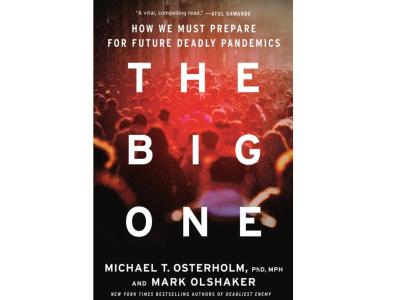Nov 9, 2007 (CIDRAP News) – Deliveries of seasonal influenza vaccine have already outpaced the number of doses ever distributed in a single season, officials from the US Centers for Disease Control and Prevention (CDC) said today, but they voiced concerns about a possible mismatch of one of the strains.
So far 103 million doses of the vaccine have been distributed to clinics and other providers, the most ever delivered, said Jeanne Santoli, MD, MPH, deputy director of the CDC's immunization services division, at a CDC press conference today. By the end of the season, 132 million doses of the vaccine will be shipped, which is 10 million more than ever produced before in the United States, she added.
Some providers may not have received their complete order yet, but all should have enough of the vaccine to launch their annual flu vaccine campaigns, Santoli said.
Despite the plentiful supply of the vaccine early in the season, she said the CDC is working to raise awareness that flu vaccination in December or later still offers protection in advance of the flu season's January-February peak. Santoli announced that the CDC will sponsor its second annual National Influenza Vaccination Week after Thanksgiving, from Nov 26 to Dec 2.
So far, the CDC has noted low levels of flu activity in the United States, which is normal for the start of a new flu season, said Joe Bresee, MD, chief of epidemiology and prevention for the CDC's immunization services division. Only 2.5% of specimens tested have been positive for influenza, and of those, 90% were influenza A, he said. Outpatient visits for influenza-like illnesses are low in all parts of the country except for the mountain region, where the number is slightly higher.
Only two areas are reporting local activity, Bresee said. According to the CDC's most recent influenza update, only Hawaii and Florida reported local influenza activity. Seventeen states have reported sporadic activity. No pediatric deaths have been reported, he said.
"The take-home message is that flu activity remains low and that people should get their vaccinations," Bresee said. "The supply is at an all-time high, and we should make the most of this opportunity."
Though CDC officials haven't seen enough isolates yet to determine if this year's vaccine is a good match against influenza strains circulating in the United States, Bresee said the agency is concerned about reports from last season and this summer of possible drift in the H3N2 A strain.
Canada's Public Health Agency said the Wisconsin H3N2 strain has mutated from the one used in the vaccine, according to an Oct 24 report from CTV, Canada's largest television network. The agency said the Malaysia influenza B strain also showed signs of change, the CTV report said.
Bresee said reports from Latin America this summer suggested a drifted H3N2 strain, and he said a US Department of Defense report estimated that the flu vaccine in its European population last season was only 52% effective, which suggests a mismatch between the circulating strains and the vaccine.
"It's too early to tell-we don't know what that will mean for the United States," he said. "Vaccination is still the best way to prevent influenza complications, and this year should be no exception," he noted, pointing out that even without a perfect match, the flu vaccine can reduce illness severity.
See also:
Nov 9 CDC press release




















